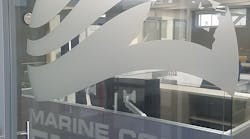Air Station Miramar Increases Microgrid Islanding Time to as Much as 21 Days for Base the Size of a Small City
Marine Corps Air Station (MCAS) Miramar has completed a test demonstrating that it can increase microgrid islanding time so that the whole base — made up of hundreds of buildings — can be islanded for up to 21 days. This was accomplished using an innovative backup system, a milestone that generated excitement for those who have been working toward this moment for years.
“I’ve been trying to do this backup generator project for so long,” said Mick Wasco, utilities and energy management director for the Marine Corps Air Station Miramar, based in San Diego. “It was painful and complicated to accomplish. I put years of effort into this, so when it finally happens, it’s truly amazing and fun to see it come together.”
On Feb. 4, for the first time the base integrated into the microgrid a diesel backup generator that has electrical paralleling capability. This allows it to serve as an additional distributed energy resource within the microgrid — as opposed to outside of it — and increases the base’s onsite fuel supply, allowing for increased islanding time, he said.
Usually, backup generators provide power to an isolated building. But in this case, the generator connects to the whole islanded microgrid system, contributing in the same way the other power sources in the microgrid do, he said.
“Based on the renewable and conventional distributed energy resources, the microgrid can island for up to 21 days with fuel available on site,” said Wasco. “Not that many sites have the experience for islanding a microgrid the scale of a small city.”
Integrated into the microgrid, the backup generator will likely produce less air pollution than traditional backup generators, which often don’t have emissions controls, he said.
The microgrid includes four components: a 6.5-MW diesel and natural-gas fired power plant, 3.2 MW of landfill gas acquired through a power purchase agreement, 2 MW of solar and the 2-MW diesel backup generator.
Landfill gas comes from a separate power plant located at the city of San Diego’s landfill operated by a third party, and the plant is directly connected electrically to the Miramar microgrid system. The landfill power plant consists of two engines that use methane gas collected from the garbage at the landfill.
Miramar’s diesel and natural gas generators are Tier 4 certified, which means they can run in compliance with the state Air Pollution Control District regulations so that Miramar can optimize grid support and also test its islanding capability to ensure the microgrid is resilient, said Wasco.
In addition to being excited about the air station’s ability to extend microgrid islanding for up to 21 days, Wasco is proud of Miramar’s contribution to the grid during the summer of 2022, when California’s grid was strained by hot weather.
The microgrid participated in every day of emergency response under SDG&E’s Emergency Load Reduction Program (ELRP), and reduced the utility’s demand every day by 5 MW for 10 days, said Wasco.
In addition, the microgrid came to the rescue through a pilot program, the Miramar Summer Incentive Generation Incentive, providing microgrid power to SDG&E between 4 pm and 9 pm On Aug. 17 when the grid was strained. The microgrid provided enough power for about 3,000 homes in the San Diego area. The event was a “flex alert,” not an ELRP, said Wasco.
Under the summer incentive generation agreement, the base will receive energy credits from SDG&E.
Other significant Miramar milestones
On Feb. 4, In addition to testing the microgrid’s ability to island with the backup generator, the base tested its ability to shed load by controlling its air conditioning system in a demonstration funded by the California Energy Commission (CEC). The base controlled air conditioning in one facility during peak demand hours, shedding 45 kW. With hundreds of buildings on the base, Miramar expects it can shed up to 3 MW, said Wasco.
“The controls were in place, it was more about programming the software in the human-machine interface so that an operator could turn off the power as opposed to a programmer having to put in the code,” explained Wasco.
Expanding the islanding time for the microgrid and successfully testing load shedding are not the only firsts for Miramar.
In November 2022, the California Public Utilities Commission gave SDG&E permission to recover costs from ratepayers for power secured from the air station’s microgrid.
SDG&E inked the agreement with the air station out of concern that it would come up short during the summer of 2021 if the grid were under strain — which did happen.
Under the agreement, the utility pays MCAS Miramar for providing 6 MW of generation to the grid during times of emergency.
The deal is important to the microgrid industry because it places a monetary value on microgrid use to help avert a grid crisis. Microgrid advocates see it as offering valuable information for regulators elsewhere that are deciding how to pay microgrids when they bolster the grid — a microgrid benefit that is increasingly common but is inconsistently monetized throughout the US.
What’s next for the Miramar microgrid?
Now Miramar is designing a 1.5-MW energy storage system that was funded by the CEC. A partnership among Miramar, the CEC and the University of California, San Diego, the project focuses on some of the challenges, such as meeting building and fire protection codes, associated with deploying energy storage. It’s expected to be deployed in a few years.
The project will yield information about how to deploy newer technologies such as energy storage.
Wasco hopes that the Miramar base’s efforts to shed load, island and participate in power emergencies will help relieve the burden on citizens, who are often asked to turn down their air conditioners on hot days that spur energy shortages.
“It’s better not to put the solution on the backs of the community,” he said.
Learn more about military microgrids at Microgrid 2023: Lights On! to be held in Anaheim, California May 16-17. See the agenda.









